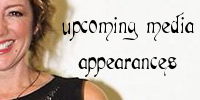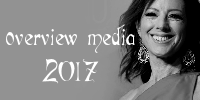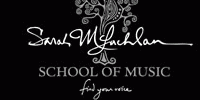November 13, 2013
Publication title: Vancouver Sun, vol. -, Iss. -, pg. –
Place: Vancouver
Writer: Shawn Conner
Sarah McLachlan-inspired ballet explores ‘ethos of the modern woman’
When Jean Grand-Maître and Sarah McLachlan first sat down to discuss a ballet based on her music, the conversation turned toward the lives of women.
“She said, women today have so many more choices now then they did even 15 years ago,” said Grand-Maître, Alberta Ballet’s artistic director and choreographer.
“How do they create a balanced life spiritually between work and life and children when they have more and more possibilities?”
That initial conversation led to one of the themes running through Fumbling Towards Ecstasy, a ballet based on the Vancouver singer-songwriter’s music. It’s Grand-Maître’s fourth such production, where dancers reframe the music and lyrics of 20th century pop composers in a contemporary dance milieu. He has based previous Alberta Ballet productions on the music of Joni Mitchell (The Fiddle and Drum, 2007), Elton John (Love Lies Bleeding, 2010) and k.d. lang (Balletlujah!), which premiered earlier this year).
Fumbling Towards Ecstasy premiered in Edmonton in 2011. The performances at the Queen Elizabeth Theatre mark the first time Fumbling Towards Ecstasy has played in McLachlan’s hometown.
Grand-Maître and the multi-platinum singer first met when McLaclan attended a performance of The Fiddle and Drum, which opened the 2010 Cultural Olympiad. They met again when McLachlan watched Grand-Maître and his dancers rehearse for a performance of her song Ordinary Miracle that McLachlan would sing at the opening ceremonies.
“She spent the whole day with us and was enthralled by how the dancers create movement,” the choreographer said. “Especially because it was her music. It connected with her in a very strong way.”
“I saw him work, saw him with the dancers, saw how he brought out the best in them,” McLachlan said. “I went up to him and said, ‘This is beautiful to witness, we should work together some day.’ He said, ‘Well, I love your music — let’s do a ballet.’ It was pretty much as simple as that.”
McLachlan never seriously entertained the idea of becoming a professional dancer. “I wanted to be a musician,” she said. “I suppose I wanted to be a ballerina for about five minutes until I realized I was hopelessly two-left-feet. I took dance for maybe a year, but it mostly involved running around onstage licking ourselves pretending to be cats.”
After McLachlan agreed to the project, Grand-Maître immersed himself in her music.
“What was interesting with Sarah was realizing little details,” he said. “Like, she will interpret songs in completely different ways. One way might be more upbeat, another slower and melancholic. But first you realize she has this extraordinary voice, and that her music is eminently danceable in a contemporary ballet vernacular, because of those soaring melodies and that voice, which is ephemeral in a way and connects well with the movement. And then that the rhythms are very eclectic, those are very challenging.”
“My music is quite easy to translate to dance,” McLachlan said. “It’s sensual, emotionally charged. As dancers, they’re trying to tell a story with their bodies. It’s a very emotional story. And I think it’s a beautiful translation. I love witnessing it, I love seeing my music taken to a different realm, to a place I don’t know how to take it.”
Likewise, the ballet goes somewhere that it couldn’t go without dipping into the pop vernacular — the mainstream.
“If ballet is going to endure in our culture, then it has to garner new audiences,” McLachlan said. “This is a great way to do it.”
Access to the singer informed the production in many ways.
“Most of the composers we work with died 100 years ago,” Grand-Maître said. “Finally we can talk to the musician and the composer. It’s important because it pushes us into new directions.”
For Fumbling Towards Ecstasy, he notes that “five world-class designers, many from Cirque du Soleil, have worked on creating stimulating visual environments that will support the story and the music.”
And being able to ask McLachlan about her life and work has had a considerable influence as well.
After their initial conversation, Grand-Maître knew that Fumbling Towards Ecstasy would be about more than just McLachlan’s musical journey.
“I started asking all the women I knew, the dancers, Sarah herself, what are the really important moments?” Grand-Maître said. “They all talked about love, betrayal, giving life, the first child, loss, death. From these conversations came the script.”
“It’s not based on my life,” McLachlan said. “But there are ideas of archetypes throughout a woman’s life.”
As a narrative emerged, Grand-Maître was able to select songs from her catalogue that fit. “It’s about really finding the story and then finding the lyrics that tell the story and creating a sequence that’s dynamic.” At the same time, he approaches his pop ballet productions with a few basic intentions when it comes to the artists’ work.
“We try to select songs from throughout their entire career, from their first album to last, and all the styles they might have interpreted,” he said.
The productions are very different, he notes. The k.d. lang ballet “is about a love story between two women and the Canadian prairies,” Grand-Maître said. “Elton was about homosexual repression and drug addiction. Joni was about war and the environmental crisis. With Sarah, it was really about spiritual forgiveness and being able to live with oneself in a very profound way, and the ethos of the modern woman.”
Listening to McLachlan’s music in preparation for the ballet, Grand-Maître noticed another theme emerging, a theme that echoes one of her album titles.
“What I really noticed about her is that she’s sending out a good vibration in a world that needs a lot of solace.”












